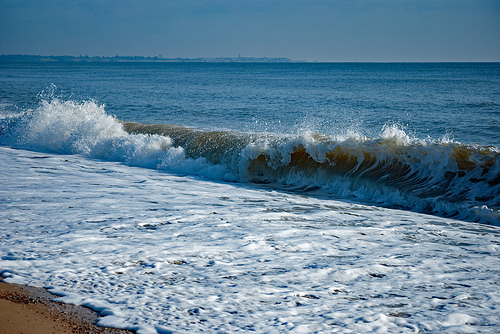Dunwich
The town of Dunwich, also commonly called the Lost Town of Dunwich or the Lost City of England, is a small town that has almost completely sunken into the North Sea due to continual coastal erosion. Despite the disastrous demise of the small former town, it remains an interesting tourism destination as a museum has been erected in its honour. There are a couple buildings still left standing and some of those are soon to be washed into the sea as well.
An Early Warning for Rising Sea Levels?
As news of climate change, melting ice caps, and rising sea levels continues to bombard us on a daily basis, one can’t help but wonder if the lost town of Dunwich is a preliminary portrait of what is to come for many other coastal cities around the world. While the downfall of Dunwich wasn’t due to climate change but because of its low elevation and vulnerability to storm surge, the concept of an ever-encroaching ocean seems to provide a glimpse of what future generations may witness in other coastal areas as sea levels rise over the coming century.
A Timeline of the Downfall of Dunwich
In Anglo-Saxon times, Dunwich was a bustling town that served as the mighty capital of the Kingdom of Eastern Angles, reaching a size that was equivalent to 14th-century London at its peak. Sadly, major storms in 1286 and 1287 washed away much of the original town. In 1328 anther major storm washed away the nearby village of Newton and in 1347 a startling 400 homes were engulfed by the sea. By that time the majority of the town had been devastated and in 1362 the historically famous St. Marcellus’ flood finished off most of the town’s remaining structures. Storms have continued to batter the ill-positioned settlement over the years, creating even more recent underwater ruins for visitors to explore.
Dwindling Population, Increasing Tourism
Ironically, even as more buildings lie in the peril of the encroaching sea and its population has fallen below a meagre 100 residents, the number of tourists who come here every year is increasing. In 1086 the town was reported to have an estimated population of around 3,000, so that gives you an idea of how much it has been diminished in size by coastal corrosion. The area’s misfortune has led to it being surrounded by Suffolk folklore, most notably the Dark Heart of Dunwich – a tale of a distraught maiden who went out to sea and now haunts the land after being deserted by her lover.
Nearby Attractions Worth Seeing
Once you’re done checking out the Dunwich Museum, you’ll want to stop by the Suffolk Coast National Nature Reserve to get an up-close look at the eroded shoreline that once served as the town centre. The Southwold Lighthouse and Pier, Greyfriars, and Denes Beach are other nearby destinations that every visitor should see before leaving. There are also a handful of tour providers and specialty shops in the area that can help you spice up your visit with memorabilia and memorable experiences. Furthermore, the Hen Reedbeds in Blythburgh are only about 7 kilometres from Dunwich.




